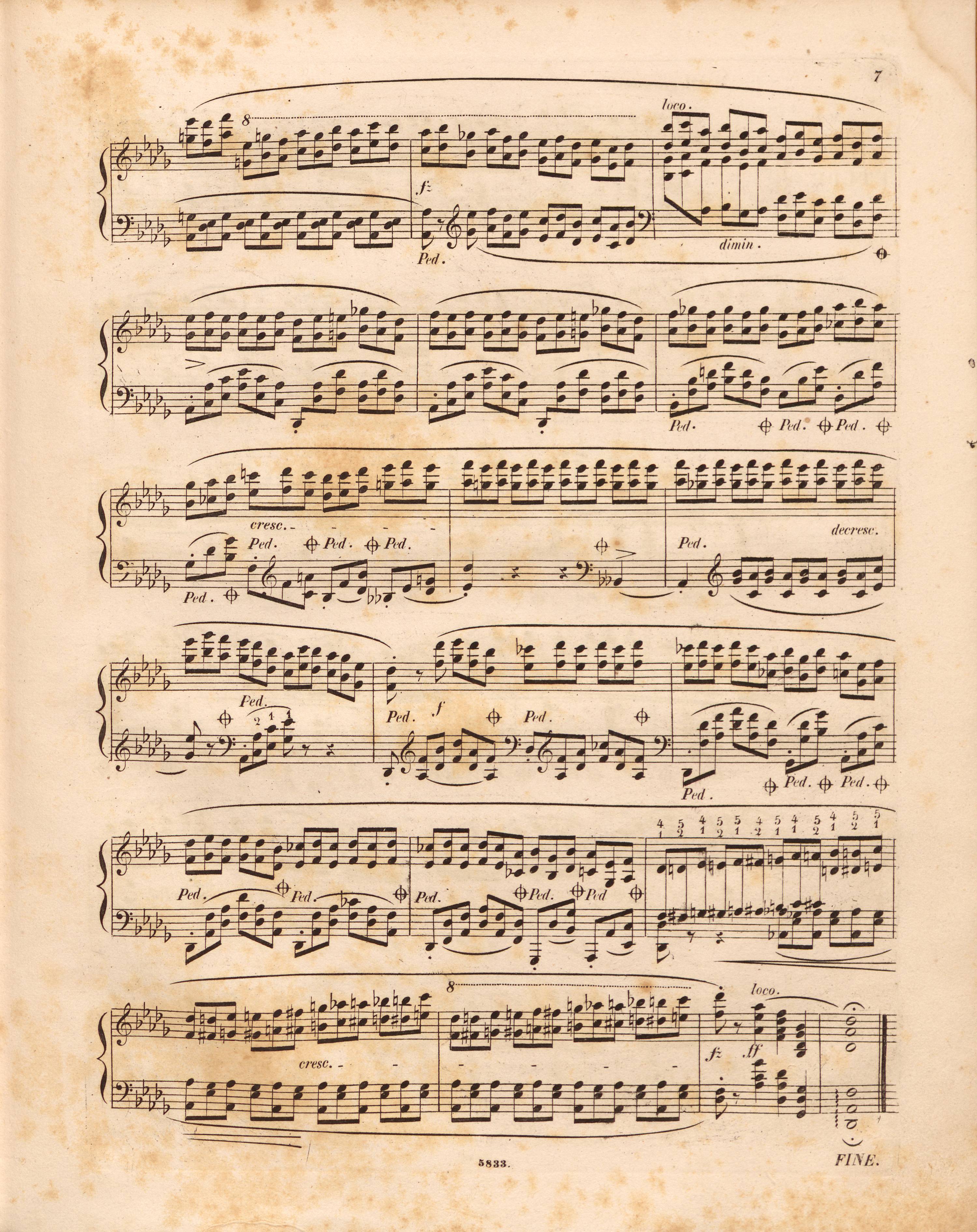



The authenticity and chronology of the source versions are not certain. Chopin  would often be misinterpreted by the engravers as
would often be misinterpreted by the engravers as  (cf., e.g., the Etude in E major, Op. 10 No. 3, bar 54). In this case, however, a double mistake – as FE and EE1 had different handwritten base texts – does not seem to be very likely. In turn, if we consider
(cf., e.g., the Etude in E major, Op. 10 No. 3, bar 54). In this case, however, a double mistake – as FE and EE1 had different handwritten base texts – does not seem to be very likely. In turn, if we consider  to be authentic, there arises a question concerning the chronology of the indications:
to be authentic, there arises a question concerning the chronology of the indications:
-
Both
 and
and  could have been added by Chopin to the already finished Stichvorlage manuscripts. In this case finding out the chronology is actually impossible.
could have been added by Chopin to the already finished Stichvorlage manuscripts. In this case finding out the chronology is actually impossible. -
However, if
 was introduced into A still before the base texts to FE and EE1 had been prepared, it was most probably copied to them and then removed by Chopin (probably by deletion) and replaced with
was introduced into A still before the base texts to FE and EE1 had been prepared, it was most probably copied to them and then removed by Chopin (probably by deletion) and replaced with  . This would explain the shifts of this sign present in FE and EE1 (→EE2), and, above all, it would allow to consider
. This would explain the shifts of this sign present in FE and EE1 (→EE2), and, above all, it would allow to consider  as an expression of Chopin's final intention.
as an expression of Chopin's final intention.
The above analysis leads to the conclusion that it is the adoption of  as the basic version that is more sensible. However, the placement of the sign in FE is certainly inaccurate, hence we give
as the basic version that is more sensible. However, the placement of the sign in FE is certainly inaccurate, hence we give  there, where it is supposed to be on the basis of the musical narration, i.e. at the beginning of the bar.
there, where it is supposed to be on the basis of the musical narration, i.e. at the beginning of the bar.
It is also worth considering how each of these indications may influence the performance. As far as the absolute dynamic level reached in the climax is concerned, there is practically no difference – after the preceding it two-bar crescendo the climax (indicated by  ) should have been clear (hence not
) should have been clear (hence not  , which, after all, Chopin did not like, as he preferred mezza voce), but at the same time not exaggerated (therefore rather not
, which, after all, Chopin did not like, as he preferred mezza voce), but at the same time not exaggerated (therefore rather not  ). The difference becomes evident when we imagine the dynamics of the fragment which directly follows the climax:
). The difference becomes evident when we imagine the dynamics of the fragment which directly follows the climax:
-
 may suggest a sharp return to the previously fixed level of dynamics, in any case, its rapid and clear decrease,
may suggest a sharp return to the previously fixed level of dynamics, in any case, its rapid and clear decrease, -
 does not bring such a connotation, allowing for at least half-a-bar (pedal!) free resounding of the beginning of the falling cascade of chords, leading then to diminuendo marked by Chopin.
does not bring such a connotation, allowing for at least half-a-bar (pedal!) free resounding of the beginning of the falling cascade of chords, leading then to diminuendo marked by Chopin.
According to us, the above remarks enhance the aforementioned conclusions drawn from the source argumentation, at the same time providing a possible motif explaining Chopin's possible change of concept from  to
to  .
.
EE3 adopted the version of GE.
Compare the passage in the sources »
category imprint: Interpretations within context; Differences between sources
issues: fz – f, Centrally placed marks
notation: Verbal indications





